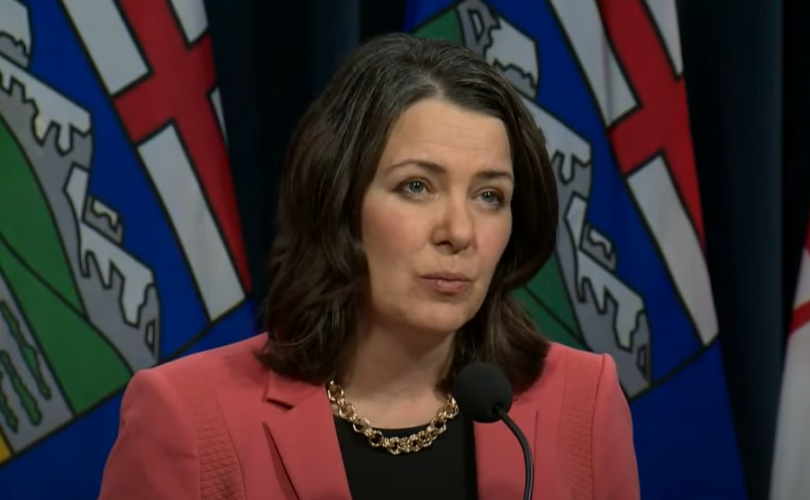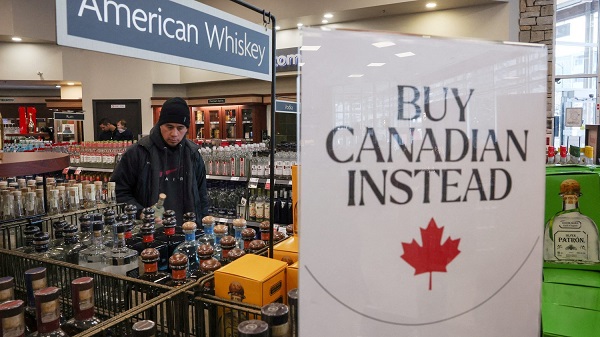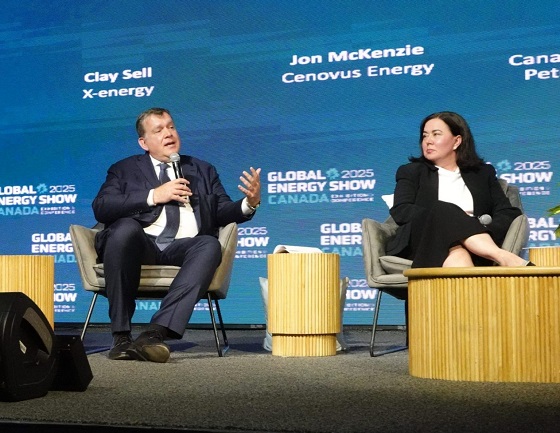Alberta
Alberta government should eliminate corporate welfare to generate benefits for Albertans

From the Fraser Institute
By Spencer Gudewill and Tegan Hill
Last November, Premier Danielle Smith announced that her government will give up to $1.8 billion in subsidies to Dow Chemicals, which plans to expand a petrochemical project northeast of Edmonton. In other words, $1.8 billion in corporate welfare.
And this is just one example of corporate welfare paid for by Albertans.
According to a recent study published by the Fraser Institute, from 2007 to 2021, the latest year of available data, the Alberta government spent $31.0 billion (inflation-adjusted) on subsidies (a.k.a. corporate welfare) to select firms and businesses, purportedly to help Albertans. And this number excludes other forms of government handouts such as loan guarantees, direct investment and regulatory or tax privileges for particular firms and industries. So the total cost of corporate welfare in Alberta is likely much higher.
Why should Albertans care?
First off, there’s little evidence that corporate welfare generates widespread economic growth or jobs. In fact, evidence suggests the contrary—that subsidies result in a net loss to the economy by shifting resources to less productive sectors or locations (what economists call the “substitution effect”) and/or by keeping businesses alive that are otherwise economically unviable (i.e. “zombie companies”). This misallocation of resources leads to a less efficient, less productive and less prosperous Alberta.
And there are other costs to corporate welfare.
For example, between 2007 and 2019 (the latest year of pre-COVID data), every year on average the Alberta government spent 35 cents (out of every dollar of business income tax revenue it collected) on corporate welfare. Given that workers bear the burden of more than half of any business income tax indirectly through lower wages, if the government reduced business income taxes rather than spend money on corporate welfare, workers could benefit.
Moreover, Premier Smith failed in last month’s provincial budget to provide promised personal income tax relief and create a lower tax bracket for incomes below $60,000 to provide $760 in annual savings for Albertans (on average). But in 2019, after adjusting for inflation, the Alberta government spent $2.4 billion on corporate welfare—equivalent to $1,034 per tax filer. Clearly, instead of subsidizing select businesses, the Smith government could have kept its promise to lower personal income taxes.
Finally, there’s the Heritage Fund, which the Alberta government created almost 50 years ago to save a share of the province’s resource wealth for the future.
In her 2024 budget, Premier Smith earmarked $2.0 billion for the Heritage Fund this fiscal year—almost the exact amount spent on corporate welfare each year (on average) between 2007 and 2019. Put another way, the Alberta government could save twice as much in the Heritage Fund in 2024/25 if it ended corporate welfare, which would help Premier Smith keep her promise to build up the Heritage Fund to between $250 billion and $400 billion by 2050.
By eliminating corporate welfare, the Smith government can create fiscal room to reduce personal and business income taxes, or save more in the Heritage Fund. Any of these options will benefit Albertans far more than wasteful billion-dollar subsidies to favoured firms.
Authors:
Alberta
Calls for a new pipeline to the coast are only getting louder

From Resource Works
Alberta wants a new oil pipeline to Prince Rupert in British Columbia.
Calls on the federal government to fast-track new pipelines in Canada have grown. But there’s some confusion that needs to be cleared up about what Ottawa’s intentions are for any new oil and gas pipelines.
Prime Minister Carney appeared to open the door for them when he said, on June 2, that he sees opportunity for Canada to build a new pipeline to ship more oil to foreign markets, if it’s tied to billions of dollars in green investments to reduce the industry’s environmental footprint.
But then he confused that picture by declaring, on June 6, that new pipelines will be built only with “a consensus of all the provinces and the Indigenous people.” And he added: “If a province doesn’t want it, it’s impossible.”
And BC Premier David Eby made it clear on June 2 that BC doesn’t want a new oil pipeline, nor does it want Ottawa to cancel the related ban on oil tankers steaming through northwest BC waters. These also face opposition from some, but not all, First Nations in BC.
Eby’s energy minister, Adrian Dix, also gave thumbs-down to a new oil pipeline, but did say BC supports expanding the capacity of the existing Trans Mountain TMX oil pipeline, and the dredging of Burrard Inlet to allow bigger oil tankers to load Alberta oil from TMX at the port of Vancouver.
While the feds sort out what their position is on fast-tracking new pipelines, Alberta Premier Danielle Smith leaped on Carney’s talk of a new oil pipeline if it’s tied to lowering the carbon impact of the Alberta oilsands and their oil.
She saw “a grand bargain,” with, in her eyes, a new oil pipeline from Alberta to Prince Rupert, BC, producing $20 billion a year in revenue, some of which could then be used to develop and install carbon-capture mechanisms for the oil.
She noted that the Pathways Alliance, six of Canada’s largest oilsands producers, proposed in 2021 a carbon-capture network and pipeline that would transport captured CO₂ from some 20 oilsands facilities, by a new 400-km pipeline, to a hub in the Cold Lake area of Alberta for permanent underground storage.
Preliminary estimates of the cost of that project run up to $20 billion.
The calls for a new oil pipeline from Bruderheim, AB, to Prince Rupert recall the old Northern Gateway pipeline project that was proposed to run from Alberta to Kitimat, BC.
That was first proposed by Enbridge in 2008, and there were estimates that it would mean billions in government revenues and thousands of jobs.
In 2014, Conservative prime minister Stephen Harper approved Northern Gateway. But in 2015, the Federal Court of Appeal overruled the Harper government, ruling that it had “breached the honour of the Crown by failing to consult” with eight affected First Nations.
Then the Liberal government of Prime Minister Justin Trudeau, who succeeded Harper in 2015, effectively killed the project by instituting a ban on oil tanker traffic on BC’s north coast shortly after taking office.
Now Danielle Smith is working to present Carney with a proponent and route for a potential new crude pipeline from Alberta to Prince Rupert.
She said her government is in talks with Canada’s major pipeline companies in the hope that a private-sector proponent will take the lead on a pipeline to move a million barrels a day of crude to the BC coast.
She said she hopes Carney, who won a minority government in April, will make good on his pledge to speed permitting times for major infrastructure projects. Companies will not commit to building a pipeline, Smith said, without confidence in the federal government’s intent to bring about regulatory reform.
Smith also underlined her support for suggested new pipelines north to Grays Bay in Nunavut, east to Churchill, Manitoba, and potentially a new version of Energy East, a proposed, but shelved, oil pipeline to move oil from Alberta and Saskatchewan to refineries and a marine terminal in the Maritimes.
The Energy East oil pipeline was proposed in 2013 by TC Energy, to move Western Canadian crude to an export terminal at St. John, NB, and to refineries in eastern Canada. It was mothballed in 2017 over regulatory hurdles and political opposition in Quebec.
A separate proposal known as GNL Quebec to build a liquefied natural gas pipeline and export terminal in the Saguenay region was rejected by both federal and provincial authorities on environmental grounds. It would have diverted 19.4 per cent of Canadian gas exports to Europe, instead of going to the US.
Now Quebec’s environment minister Benoit Charette says his government would be prepared to take another look at both projects.
The Grays Bay idea is to include an oil pipeline in a corridor that would run from northern BC to Grays Bay in Nunavut. Prime Minister Carney has suggested there could be opportunities for such a pipeline that would carry “decarbonized” oil to new markets.
There have also been several proposals that Canada should build an oil pipeline, and/or a natural gas pipeline, to the port of Churchill. One is from a group of seven senior oil and gas executives who in 2017 suggested the Western Energy Corridor to Churchill.
Now a group of First Nations has proposed a terminal at Port Nelson, on Hudson Bay near Churchill, to ship LNG to Europe and potash to Brazil. And the Manitoba government is looking at the idea.
“There is absolutely a business case for sending our LNG directly to European markets rather than sending our natural gas down to the Gulf Coast and having them liquefy it and ship it over,” says Robyn Lore of project backer NeeStaNan. “It’s in Canada’s interest to do this.”
And, he adds: “The port and corridor will be 100 per cent Indigenous owned.”
Manitoba Premier Wab Kinew has suggested that the potential trade corridor to Hudson Bay could handle oil, LNG, hydrogen, and potash slurry. (One obvious drawback, though, winter ice limits the Hudson Bay shipping season to four months of the year, July to October.)
All this talk of new pipelines comes as Canada begins to look for new markets to reduce reliance on the US, following tariff measures from President Donald Trump.
Alberta Premier Smith says: “I think the world has changed dramatically since Donald Trump got elected in November. I think that’s changed the national conversation.”
And she says that if Carney wants a true nation-building project to fast-track, she can’t think of a better one than a new West Coast oil pipeline.
“I can’t imagine that there will be another project on the national list that will generate as much revenue, as much GDP, as many high paying jobs as a bitumen pipeline to the coast.”
Now we need to know what Mark Carney’s stance on pipelines really is: Is it fast-tracking them to reduce our reliance on the US? Or is it insisting that, for a pipeline, “If a province doesn’t want it, it’s impossible.”
Alberta
Central Alberta MP resigns to give Conservative leader Pierre Poilievre a chance to regain a seat in Parliament

From LifeSiteNews
Conservative MP Damien Kurek stepped aside in the Battle River-Crowfoot riding to allow Pierre Poilievre to enter a by-election in his native Alberta.
Conservative MP Damien Kurek officially resigned as an MP in the Alberta federal riding of Battle River-Crowfoot in a move that will allow Conservative Party of Canada leader Pierre Poilievre to run in a by-election in that riding to reclaim his seat in Parliament.
June 17 was Kurek’s last day as an MP after he notified the House Speaker of his resignation.
“I will continue to work with our incredible local team to do everything I can to remain the strong voice for you as I support Pierre in this process and then run again here in Battle River-Crowfoot in the next general election,” he said in a statement to media.
“Pierre Poilievre is a man of principle, character, and is the hardest working MP I have ever met,” he added. “His energy, passion, and drive will have a huge benefit in East Central Alberta.”
Kurek won his riding in the April 28 election, defeating the Liberals by 46,020 votes with 81.8 percent of the votes, a huge number.
Poilievre had lost his Ottawa seat to his Liberal rival, a seat that he held for decades, that many saw as putting his role as leader of the party in jeopardy. He stayed on as leader of the Conservative Party.
Poilievre is originally from Calgary, Alberta, so should he win the by-election, it would be a homecoming of sorts.
It is now up to Prime Minister of Canada Mark Carney to call a by-election in the riding.
Carney had promised that he would “trigger” a by-election at once, saying there would be “no games” trying to prohibit Poilievre from running and win a seat in a safe Conservative riding.
Despite Kurek’s old seat being considered a “safe” seat, a group called the “Longest Ballot Committee” is looking to run hundreds of protest candidates against Poilievre in the by-election in the Alberta Battle River–Crowfoot riding, just like they did in his former Ottawa-area Carleton riding in April’s election.
-

 Health2 days ago
Health2 days agoLast day and last chance to win this dream home! Support the 2025 Red Deer Hospital Lottery before midnight!
-

 Uncategorized2 days ago
Uncategorized2 days agoKananaskis G7 meeting the right setting for U.S. and Canada to reassert energy ties
-

 Business2 days ago
Business2 days agoCarney’s Honeymoon Phase Enters a ‘Make-or-Break’ Week
-

 conflict2 days ago
conflict2 days agoTrump leaves G7 early after urging evacuation of Tehran
-

 Alberta2 days ago
Alberta2 days agoAlberta announces citizens will have to pay for their COVID shots
-

 Business2 days ago
Business2 days agoCarney praises Trump’s world ‘leadership’ at G7 meeting in Canada
-

 Business1 day ago
Business1 day agoTrump family announces Trump Mobile: Made in America, for America
-

 Crime1 day ago
Crime1 day agoUK finally admits clear evidence linking Pakistanis and child grooming gangs






